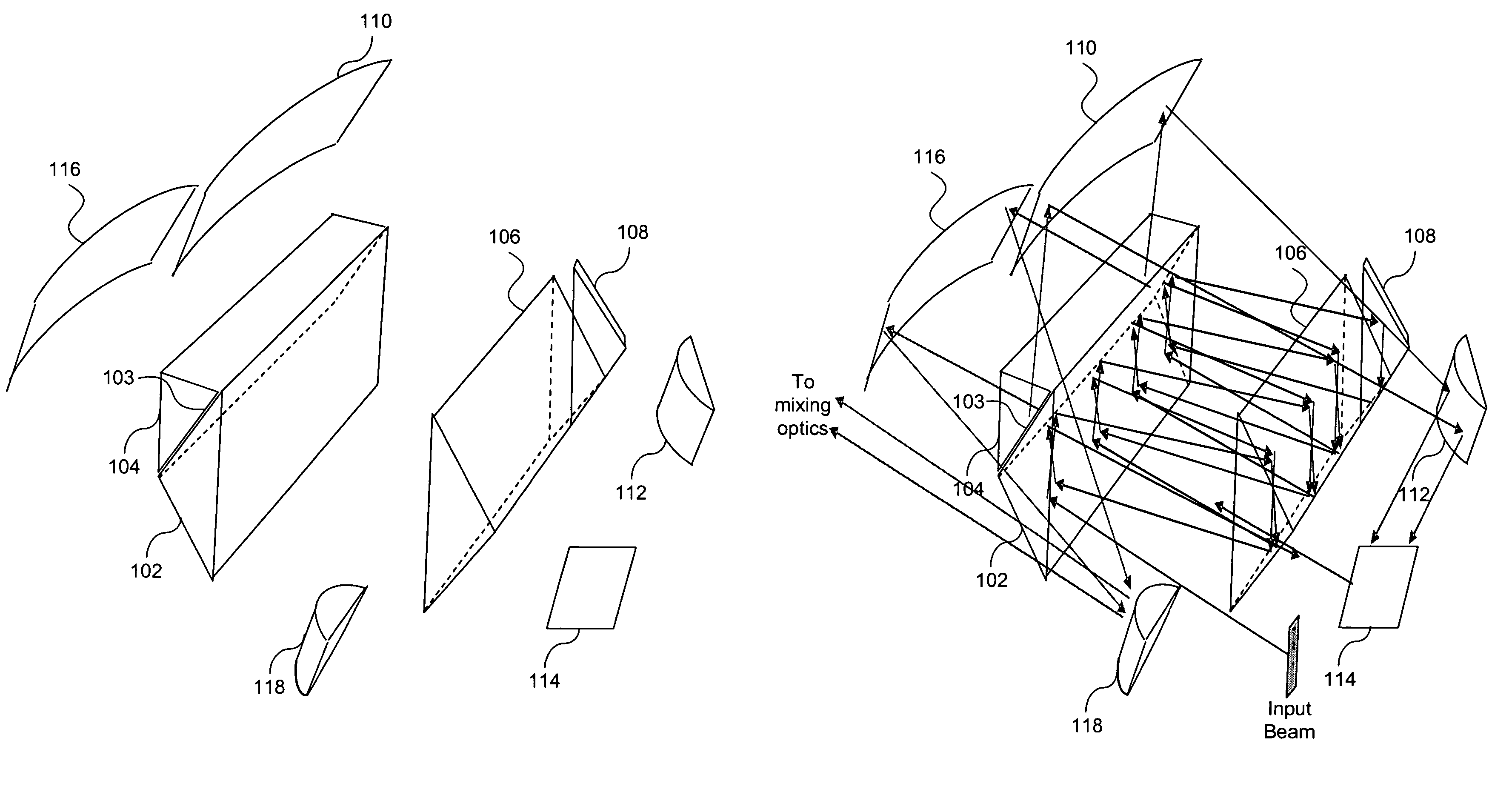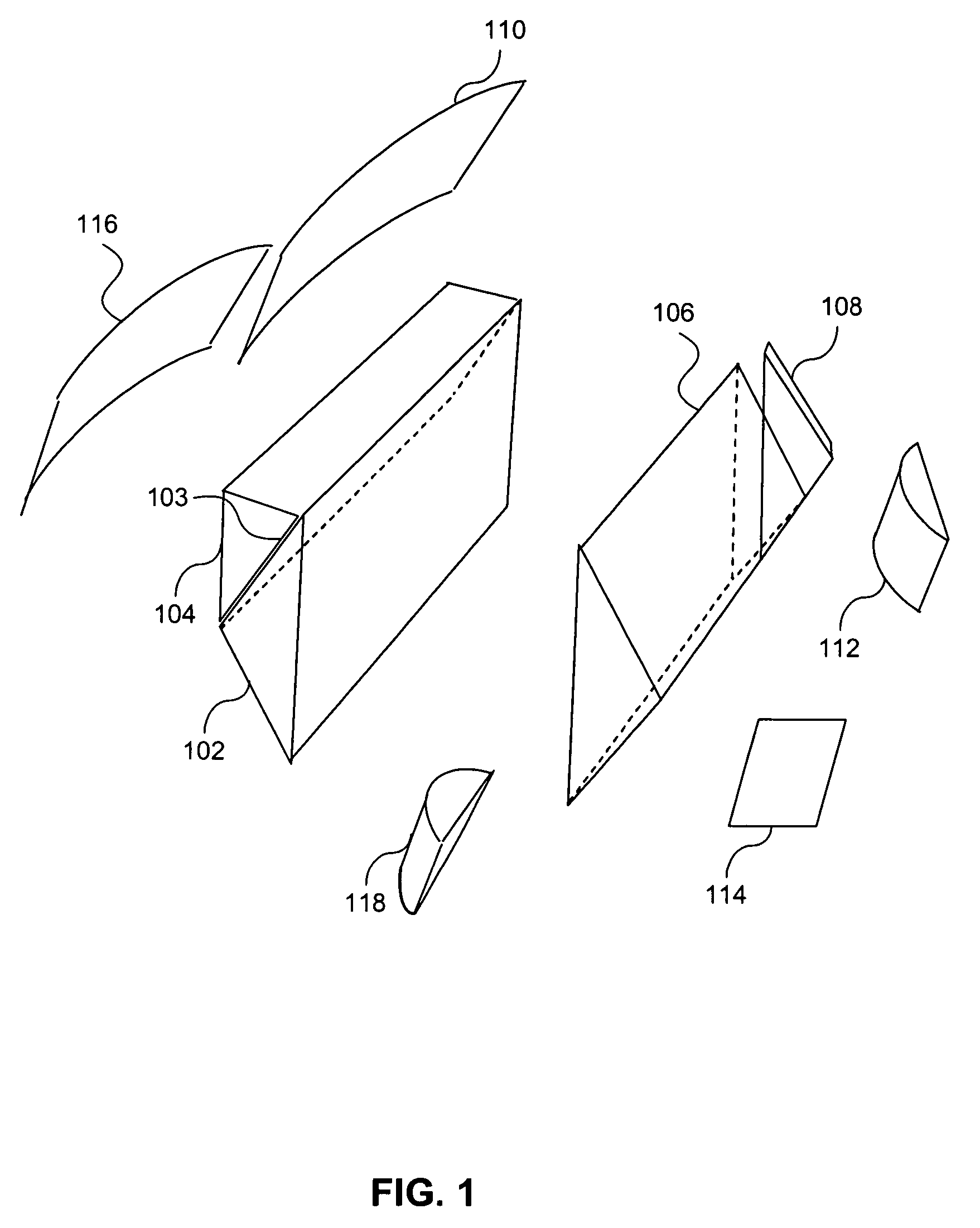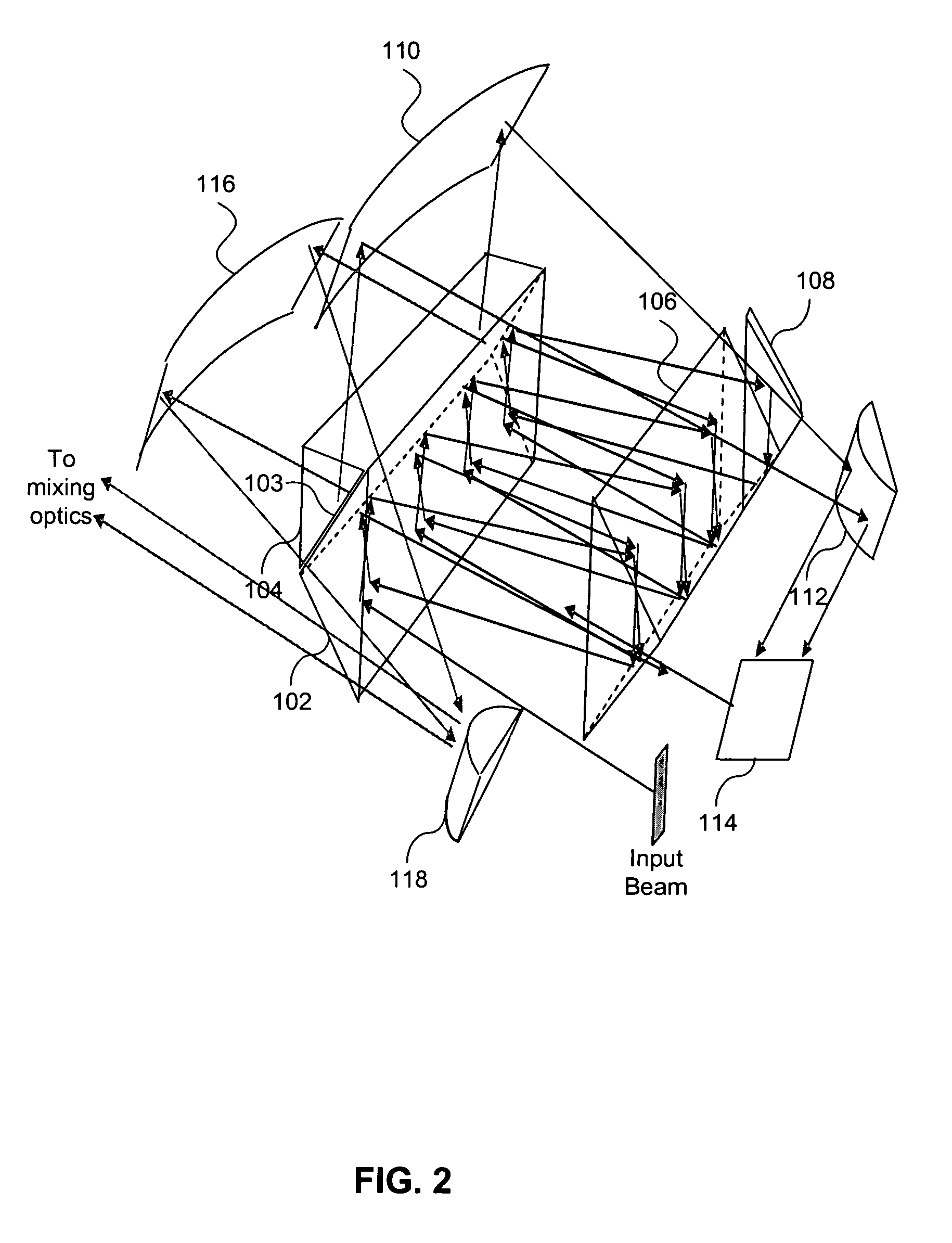Compact pulse stretcher
a compact, stretcher technology, applied in the direction of printers, instruments, electrical equipment, etc., can solve the problems of limited space available for projection optical systems with lithographic tools, difficult design of optical components used in microlithography, frequent replacement of optical components,
- Summary
- Abstract
- Description
- Claims
- Application Information
AI Technical Summary
Problems solved by technology
Method used
Image
Examples
Embodiment Construction
[0021]Reference will now be made in detail to the embodiments of the present invention, examples of which are illustrated in the accompanying drawings.
[0022]To achieve a compact pulse stretcher, two prisms (or a single cube) can be used to fold an input beam into a loop that constitutes the delay path. By angling the input beam in the third dimension orthogonal to the plane of the loop, the beam follows a shallow helical path, thus allowing the same delay optics to be used several times. As many as four possible independent helical paths through the delay loop may be obtained by reintroducing the beam with the optics, and a single compact set of delay optics with a relatively small delay per each loop can effectively provide a very long delay. A coupling prism on one face extracts a small part of the beam at each loop, producing many delayed pulses that result in both stretching and smoothing of the pulse. The pulses are also spatially separated, but can be mixed back together by an...
PUM
| Property | Measurement | Unit |
|---|---|---|
| length | aaaaa | aaaaa |
| length | aaaaa | aaaaa |
| size | aaaaa | aaaaa |
Abstract
Description
Claims
Application Information
 Login to view more
Login to view more - R&D Engineer
- R&D Manager
- IP Professional
- Industry Leading Data Capabilities
- Powerful AI technology
- Patent DNA Extraction
Browse by: Latest US Patents, China's latest patents, Technical Efficacy Thesaurus, Application Domain, Technology Topic.
© 2024 PatSnap. All rights reserved.Legal|Privacy policy|Modern Slavery Act Transparency Statement|Sitemap



